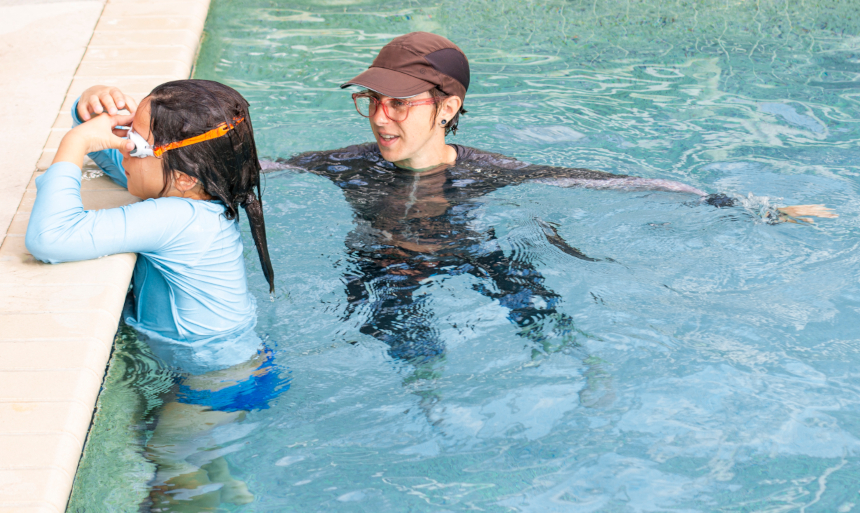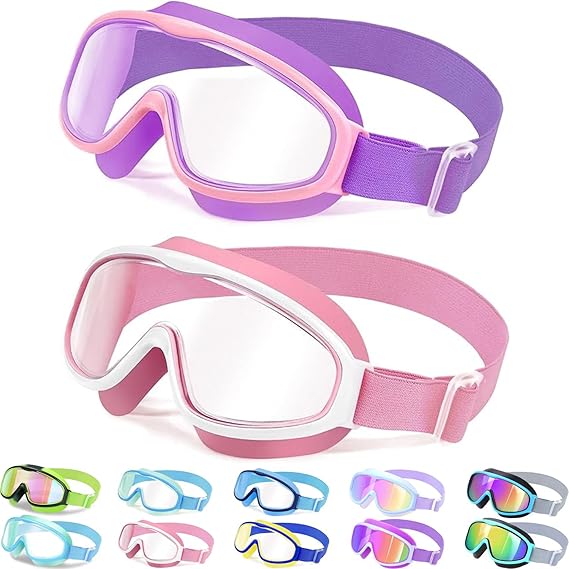My professional opinion is that goggles are almost always a good idea. Goggles help fearful kids get over the hump, they propel beginner swimmers into readiness for advanced strokes, and encourage exploration.

When is it NOT a good idea to give your child goggles?
I’ve always defaulted to the idea that a child should learn to put their face in the water without goggles before using them regularly. I would hate for anyone to rely on the use of goggles as a crutch and find themselves panicked if they end up in the water without goggles.
Framing goggles as a reward for learning to submerge independently could be highly motivational.
When do you recommend getting goggles?
If your child is already swimming, but appears haphazard or frenzied, goggles will calm their movements. If your child struggles to change direction or swim downward, goggles will increase their confidence to position their head to lead their body. If your child is unable to focus on breath control or body movement combinations, goggles will allow them to practice with control. If you’ve bribed your child with the idea of goggles, you better fulfill that commitment.
What kind of swim goggles are best for kids?
I’ve considered this question at length. My mom owned a swim shop and I answered this question almost daily.
Most kids feel the most comfortable in a swim mask. (That’s not to be confused with a snorkel mask that includes nose coverage.) A swim mask will only cover the eyes but offers a huge field of vision compared to traditional goggles.

This is the set I utilize at my Swim School and plenty of parents have opted to purchase their own pairs.
If your kids are more advanced, it could be a good idea to stick with traditional goggles that sit closer to the face, reducing drag and making them a better choice for competitive swimmers.